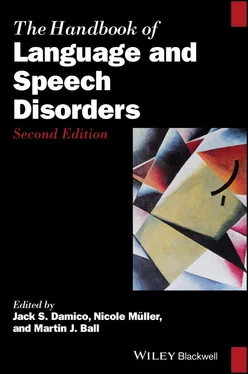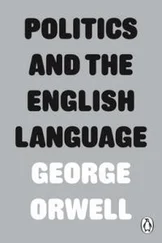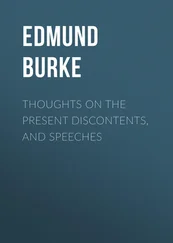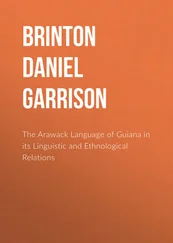19 Ertmer, D. J. (2010). Relationships between speech intelligibility and word articulation scores in children with hearing loss. Journal of Speech, Language and Hearing Research, 53(5), 1075–1086. doi:10.1044/1092‐4388(2010/09‐0250)
20 Flipsen, P. (2006). Measuring the intelligibility of conversational speech in children. Clinical Linguistics & Phonetics, 20(4), 303–312.
21 Giles, H., & Powesland, P. F. (1975). Speech style and social evaluation. London, UK: Academic Press.
22 Hodge, M., & Daniels, J. (2007). TOCS+ intelligibility measures. Edmonton, AB: University of Alberta.
23 Hodge, M., & Gotzke, C. L. (2014). Criterion‐related validity of the test of children's speech sentence intelligibility measure for children with cerebral palsy and dysarthria. International Journal of Speech‐Language Pathology, 16(4), 417–426. doi:10.3109/17549507.2014.930174
24 Hustad, K. C., & Cahill, M. A. (2003). Effects of presentation mode and repeated familiarization on intelligibility of dysarthric speech. American Journal of Speech‐Language Pathology, 12, 198–208.
25 Hustad, K. C., Dardis, C. M., & McCourt, K. A. (2007). Effects of visual information on intelligibility of open and closed class words in predictable sentences produced by speakers with dysarthria. Clinical Linguistics & Phonetics, 21(5), 353–367. doi:10.1080/02699200701259150
26 Hustad, K. C., Mahr, T., & Rathouz, P. J. (2020). Development of speech intelligibility between 30 and 47 months in typically developing children. Journal of Speech, Language and Hearing Research.
27 Hustad, K. C., Mahr, T. J., Broman, A. T., & Rathouz, P. J. (2020). Longitudinal growth in single‐word intelligibility among children with cerebral palsy from 24 to 96 months of age: Effects of speech‐language profile group membership on outcomes. Journal of Speech, Language, and Hearing Research, 63(1), 1–17.
28 Hustad, K. C., Oakes, A., & Allison, K. (2015). Variability and diagnostic accuracy of speech intelligibility scores in children. Journal of Speech, Language, and Hearing Research, 58(6), 1695–1707. doi:10.1044/2015_JSLHR‐S‐14‐0365
29 Hustad, K. C., Sakash, A., Broman, A. T., & Rathouz, P. J. (2019). Differentiating typical from atypical speech production in 5‐year‐old children with cerebral palsy: A comparative analysis. American Journal of Speech‐Language Pathology, 28(2S), 807–817.
30 Hustad, K. C., Sakash, A., Natzke, P. E. M., Broman, A. T., & Rathouz, P. J. (2019). Longitudinal growth in single word intelligibility among children with cerebral palsy from 24 to 96 months of age: Predicting later outcomes from early speech production. Journal of Speech, Language, and Hearing Research, 62(6), 1599–1613.
31 Hustad, K. C., Schueler, B., Schultz, L., & DuHadway, C. (2012). Intelligibility of 4‐year‐old children with and without cerebral palsy. Journal of Speech, Language, and Hearing Research, 55(4), 1177–1189. doi:10.1044/1092‐4388(2011/11‐0083)
32 Kent, R., Kent, J., Weismer, G., Martin, R., Sufit, R., Brooks, B., & Rosenbek, J. (1989). Relationships between speech intelligibility and the slope of second‐formant transitions in dysarthric subjects. Clinical Linguistics and Phonetics, 3(4), 347–358.
33 Kent, R., Miolo, G., & Bloedel, S. (1994). The intelligibility of children’s speech: A review of evaluation procedures. American Journal of Speech‐Language Pathology, 3, 81–95.
34 Kent, R., Weismer, G., Kent, J., & Rosenbek, J. (1989). Toward phonetic intelligibility testing in dysarthria. Journal of Speech and Hearing Disorders, 54, 482–499.
35 Kleinschmidt, D. F., & Jaeger, T. F. (2015). Robust speech perception: Recognize the familiar, generalize to the similar, and adapt to the novel. Psychological Review, 122(2), 148.
36 Lam, J., & Tjaden, K. (2013). Intelligibility of clear speech: Effect of instruction. Journal of Speech, Language, and Hearing Research, 56(5), 1429–1440. doi:10.1044/1092‐4388(2013/12‐0335)
37 Lansford, K. L., Borrie, S. A., & Barrett, T. S. (2019). Regularity matters: Unpredictable speech degradation inhibits adaptation to dysarthric speech. Journal of Speech, Language, and Hearing Research, 62(12), 4282–4290.
38 Lansford, K. L., Luhrsen, S., Ingvalson, E. M., & Borrie, S. A. (2018). Effects of familiarization on intelligibility of dysarthric speech in older adults with and without hearing loss. American Journal of Speech‐Language Pathology, 27(1), 91–98.
39 Lee, Y., Sung, J. E., & Sim, H. (2014). Effects of listeners’ working memory and noise on speech intelligibility in dysarthria. Clinical Linguistics & Phonetics, 28(10), 785–795.
40 Liss, J. M., Spitzer, S., Caviness, J. N., & Adler, C. (2002). The effects of familiarization on intelligibility and lexical segmentation in hypokinetic and ataxic dysarthria. Journal of the Acoustical Society of America, 112(6), 3022–3030.
41 McAuliffe, M. J., Gibson, E. M., Kerr, S. E., Anderson, T., & LaShell, P. J. (2013). Vocabulary influences older and younger listeners’ processing of dysarthric speech. The Journal of the Acoustical Society of America, 134(2), 1358–1368.
42 McLeod, S., & Crowe, K. (2018). Children’s consonant acquisition in 27 languages: A cross‐linguistic review. American Journal of Speech‐Language Pathology, 27(4), 1546–1571.
43 McLeod, S., Crowe, K., & Shahaeian, A. (2015). Intelligibility in Context Scale: Normative and validation data for English‐speaking preschoolers. Language, Speech, and Hearing Services in Schools, 46(3), 266–276.
44 McLeod, S., Harrison, L. J., & McCormack, J. (2012). The Intelligibility in Context Scale: Validity and reliability of a subjective rating measure. Journal of Speech, Language and Hearing Research, 55(2), 648–656.
45 Miller, G. A., Heise, G. A., & Lichten, W. (1951). The intelligibility of speech as a function of the context of the test materials. Journal of Experimental Psychology, 41, 329–335.
46 Morris, S. R., Wilcox, K. A., & Schooling, T. L. (1995). The preschool speech intelligibility measure. American Journal of Speech‐Language Pathology, 4, 22–28.
47 Natzke, P., Sakash, A., Mahr, T., & Hustad, K.C. (2020). Measuring speech production development in children with cerebral palsy between 6 and 8 years of age: Relationships among measures. Language, Speech, and Hearing Services in the Schools, 51, 882–896.
48 Pardo, J. S. (2006). On phonetic convergence during conversational interaction. The Journal of the Acoustical Society of America, 119(4), 2382–2393.
49 Pennington, L., Roelant, E., Thompson, V., Robson, S., Steen, N., & Miller, N. (2013). Intensive dysarthria therapy for younger children with cerebral palsy. Developmental Medicine and Child Neurology, 55(5), 464–471. doi:10.1111/dmcn.12098
50 Rice, M. L., Smolik, F., Perpich, D., Thompson, T., Rytting, N., & Blossom, M. (2010). Mean length of utterance levels in 6‐month intervals for children 3 to 9 years with and without language impairments. Journal of Speech, Language and Hearing Research, 53(2), 333–349. doi:10.1044/1092‐4388(2009/08‐0183)
51 Sander, E. K. (1972). When are speech sounds learned? Journal of Speech and Hearing Disorders, 37, 55–63.
52 Smit, A. B., Hand, L., Freilinger, J. J., Bernthal, J., & Bird, A. (1990a). The Iowa articulation norms project and its Nebraska replication. Journal of Speech and Hearing Disorders, 55, 779–798.
53 Smit, A. B., Hand, L., Freilinger, J. J., Bernthal, J. E., & Bird, A. (1990b). The Iowa articulation norms project and its Nebraska replication. Journal of Speech and Hearing Disorders, 55, 779–798.
54 Tikofsky, R. S., & Tikofsky, R. P. (1964). Intelligibility as a measure of dysarthric speech. Journal of Speech and Hearing Research, 7, 325–333.
55 Weismer, G. (2008). Speech intelligibility. In M. J. Ball, M. R. Perkins, N. Muller, & S. Howard (Eds.), The handbook of clinical linguistics (pp. 568–582). Oxford, UK: Blackwell Publishing.
Читать дальше












